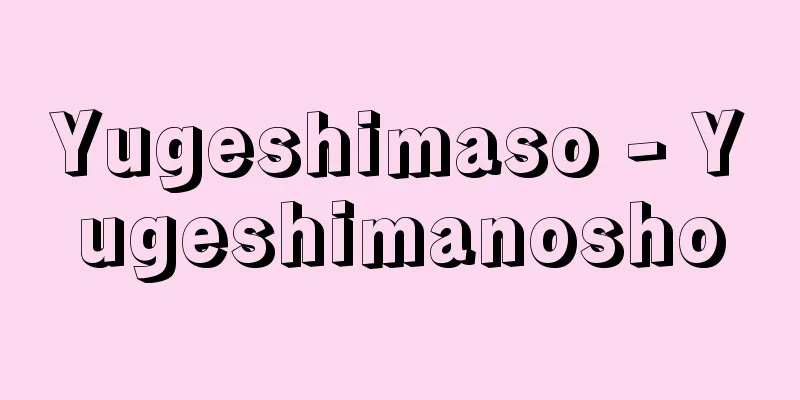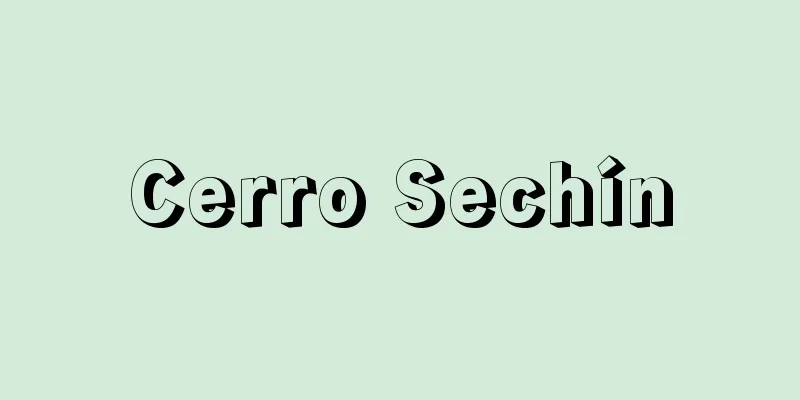Yugeshimaso - Yugeshimanosho

|
A medieval manor located on Yuge Island in Kamijima Town, Ochi County, Ehime Prefecture, on the Seto Inland Sea. This manor is particularly famous because it paid its annual tax in salt and has provided important material for research into the medieval salt industry. After its establishment, Yuge Island Manor passed from the domain of Emperor Toba to that of Emperor Goshirakawa, and was one of the so-called Chokodo domains. It later became the domain of Senyomon'in, and was donated by the Empress Dowager to Toji Temple in 1239 (En'o 1). According to inspections in 1188 and 1189 (Bun'ji 4 and 5), the area of rice paddies was 3 cho 3 tan 180 bu, with 373 mulberry trees and 26 cho 3 tan 180 bu of fields. The annual taxes were 4 koku 8 to 5 sho of rice, 373 baskets of salt, and 12 koku 3 to 1 sho 4 go of wheat, but the wheat was paid in salt, which made up the majority of the taxes. This survey resulted in the classification of 13 cho 4 tan of land as Suehisa-myo (Geshi-na) and 22 peasant names. It is believed that each name was allocated a trading field and salt field. The trading field was a field given in exchange for the payment of salt. Toji Temple was involved in a dispute with the land steward Komiya clan over the fief of Yugeshima Manor during the Shoo era (1288-93) at the end of the 13th century, which led to a lawsuit in Kamakura. It took several years for a decision to be reached, and the zasho (general manager) stayed in Kamakura for over a year, which was extremely expensive. To this end, money was sent between Kyoto and Kamakura in the form of kaezeni (exchange money), a famous early example of exchange money. The dispute with the land steward ended in 1303 (Kagen 1) with a settlement reached to divide the land into three parts, with two-thirds going to the lord and one-third to the land steward, and in 1313 (Showa 2), the island was divided into three parts. However, from the mid-14th century onwards, the Kobayakawa clan and others came into control. The salt from Yuge Island was transported to Yodotsu by the headman, who was also the Kajitori, and sold to salt merchants in Kyoto, with Toji Temple receiving the proceeds. [Kuramochi Shigehiro] "A Study of the History of the Salt Industry in Japan" by Watanabe Norifumi (1971, Sanichi Shobo)" ▽ "Ancient and Medieval Cultivated Land and Villages" by Takashige Susumu (1975, Daimeido)" ▽ "Medieval To-ji Temple and its Estates" by Amino Yoshihiko (1978, University of Tokyo Press)" ▽ "Records of Ships Entering the Northern Port of Hyogo" edited by Hayashiya Tatsusaburo (1983, Chuokoron-Bijutsu Shuppan) [Reference] | |Shoen| | | |Source: Shogakukan Encyclopedia Nipponica About Encyclopedia Nipponica Information | Legend |
|
瀬戸内海の愛媛県越智(おち)郡上島(かみじま)町弓削島にあった中世荘園。この荘園がとくに有名なのは、塩を年貢としており、中世塩業の研究に重要な素材を提供しているためである。弓削島荘は立荘以降、鳥羽院(とばいん)領から後白河(ごしらかわ)院領となり、いわゆる長講堂(ちょうこうどう)領の一つであった。その後宣陽門院(せんようもんいん)領となり、女院から1239年(延応1)東寺(とうじ)に寄進された。1188、89年(文治4、5)の検注によれば、田地3町3反180歩、桑373本、畠(はた)26町3反180歩となっている。年貢はそれぞれ米4石8斗5升、塩373籠(かご)、麦12石3斗1升4合となっているが、麦は塩で代納されており、塩が年貢の中心になっていた。この検注で13町4反の末久名(すえひさみょう)(下司(げし)名)と22名の百姓名に編成された。各名には交易(かわし)畠と塩浜が配分されていたと考えられる。交易畠は塩を貢納するかわりに与えられた畠である。 東寺は13世紀末の正応(しょうおう)年間(1288~93)地頭小宮氏と弓削島荘の知行(ちぎょう)をめぐって争い、鎌倉での訴訟となった。判決が出るまで数年もかかり、雑掌の鎌倉滞在も1年以上に及び、その費用は莫大(ばくだい)であった。そこで京―鎌倉間の送金に替銭(かえぜに)(為替(かわせ))が用いられたが、これは為替の早い例として有名である。地頭との争いは1303年(嘉元1)に3分の2を領家、3分の1を地頭とする下地(したじ)分割の和与(わよ)が成立し、13年(正和2)島を三分することになった。しかし、14世紀なかば以降になると小早川(こばやかわ)氏などの支配力が及んでくる。弓削島の塩は、名主でもある梶取(かじとり)が請け負って淀津(よどのつ)まで運ばれ、京都の塩商人に売却され、東寺はその代価を受け取った。 [蔵持重裕] 『渡辺則文著『日本塩業史研究』(1971・三一書房)』▽『高重進著『古代・中世の耕地と村落』(1975・大明堂)』▽『網野善彦著『中世東寺と東寺領荘園』(1978・東京大学出版会)』▽『林屋辰三郎編『兵庫北関入舩納帖』(1983・中央公論美術出版)』 [参照項目] | | | | | | |出典 小学館 日本大百科全書(ニッポニカ)日本大百科全書(ニッポニカ)について 情報 | 凡例 |
Recommend
Snow of Ohisasano - Snow of Ohisasano
...Types with wide, short leaves are preferred. A...
Timur
Founder of the Timurid dynasty. Said to be a desce...
Martí, José Julián
Born: January 28, 1853, Havana [Died] May 19, 1895...
Autism - The
A developmental disorder known as infantile autis...
"Kawachiya Yoshimasa Chronicle" - Kawachiya Yoshimasa Chronicle
...He explains why this is so, saying that it is ...
Tomonaga
Noh piece. Second, a Shura story. A five-school c...
Perdikkas II
… Macedonia appears in Greek history around the t...
Hermeneutical reflection
...Explanation therefore becomes merely a form of...
Kineimo - Kineimo
...They are mostly grown in cold regions such as ...
Otome Aoi - Otome Aoi
...Its distribution is wide and polymorphic, but ...
Billing - billing
Generally speaking, it refers to a specific perso...
Izanagi Style Prayer - Izanagi Style Prayer
…Medicinal plants are also cultivated. The Izanag...
Aigo (English spelling)
A Korean interjection. It is used to express an in...
Ganzhou Hui-Hu - Kanshu Kaikōtsu
In 840, the nomadic Uighur state collapsed due to...
Red infarct (English spelling)
…Arterial blockage is often due to an embolism or...







![Naraha [town] - Naraha](/upload/images/67cc689cebbb1.webp)

